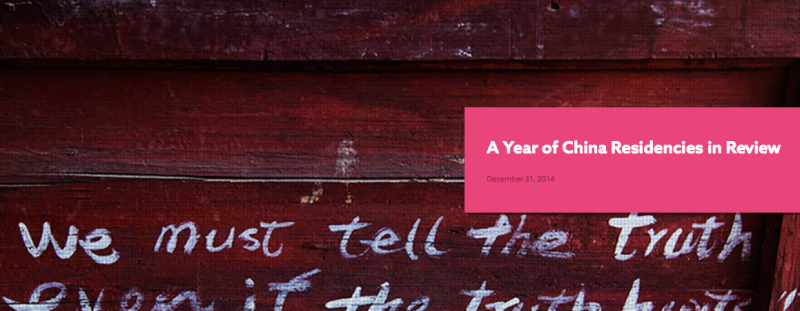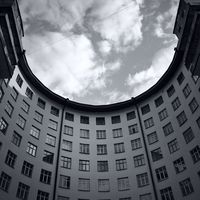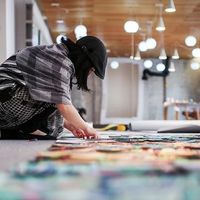A Year of China Residencies in Review

China Residencies is a non-for-profit organization creating a directory of artist residencies in mainland China. For the year end, it presents a news review of the situation of artists residencies, who's coming up, who has closed down, and what's going on in the world of artists spaces and residencies across China.
In the year and a half since China Residencies started taking a close look at residencies in mainland China, the one constant has been change. Independent arts organisations close and new ones open in their place. People running spaces move on to other projects, program staff comes and go, rents go up… and all three factors contribute to notable demises of community organisations, co-working spaces, collectives, and residencies.
In Beijing, independent base Homeshop closed after nearly six years at the very end of 2013. Founded by theoretically-minded artists and writers, Homeshop hosted discussions, film screenings, community item swaps and aquaponic agriculture experiments alike. The courtyard and surrounding kitchens, studios and workspaces had been described as a "rhizomatic-in-the-Deleuze-Guattarian-sense arts space and community center” and became a central hub for critical discussion. Homeshop celebrated its very last event with the launch of Appendix, a collection of stories about the space, and although their physical home is no longer, the Homeshop collective nevertheless recently contributed work to the multi-gallery exhibition Unlived By What Is Seen.
The Homeship mission lives on in other incarnations throughout Beijing's hutongs, notably in two nearby nonprofit residency programs. Antonie Angerer and Anna-Viktoria Eschbach opened up shop at i:project space over the summer in Banqiao hutong, hosting artists Annalena Müller and Michael Bodenmann so far, as well as many artist talks, exhibitions and events in their new space. Their neighbor residency in Heizhima hutong, The Institute for Provocation, opened up an exhibition space named after their alleyway, Black Sesame. Artists-in-residence Alessandro Rolandi hung a swing from the ceiling and Esther Kokmeijer created immersive experiences out of artificial clouds and inflatable cars in the small space, providing a chance for the visiting artists to present their works directly to the public, right then and there. IFP also continued their already strong tradition of lively discussions and thought-provoking presentations.
Over in Shanghai, two creative co-working spaces ceased operations: W+K+ and Xindanwei are no longer. W+K jia provided creatives with office space, the latter in exchange of occasional work for the advertising firm Wieden + Kennedy, which occupied the rest of the building. It housed music promoters, skate-board designers, and Thea Bauman’s interactive nail art ‘appcessory’ art project-turned-startup, Metaverse Makeovers. Xindanwei also offered shared workspace for all kinds of creative work, including the occasional painter and dancer. Choreographer in residence Janis Claxton worked on collaborative pieces between Scottish and Chinese troupes, and also gave ‘innovation workshops’ for tech companies during her stay.
While those two relatively short-lived endeavors faded away, Shanghai’s Swatch Art Peace Hotel Residency across town celebrated their third birthday with the exhibition “Faces & Traces”, live public performances, parties, and traditional Swiss yodelling on the Bund. So far, 139 artists from over 30 countries participated in their luxurious, fully-funded residencies, which provides artists with hybrid studio-suites that occupy two entire floors of the hotel.
Read the full article - lots more info to share from China Residencies
Similar content
from - to
09 Sep 2015 - 10 Nov 2015
deadline
02 Jan 2017
deadline
31 Dec 2024
deadline
30 Oct 2013
deadline
30 Jun 2024
posted on
28 Mar 2013






